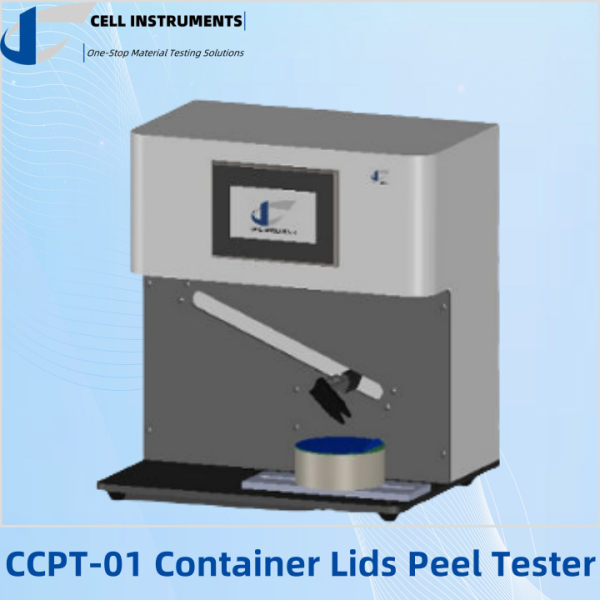How To Choose The Best Cup And Container Peeling Tester For Your Packaging Needs
Ensuring the integrity of packaging is crucial across various industries, including food, medical, and pharmaceuticals. One key aspect of packaging integrity is the peel strength of container lids. The cup and container peeling tester is an essential tool for measuring this peel strength accurately. In this article, we will explore how to choose the best cup and container peeling tester for your packaging needs, with a focus on the ASTM F2824 standard, which outlines the test methods for mechanical seal strength testing of round cups and bowl containers with flexible peelable lids.
I. Understanding the Importance of Peel Testing
1. What is Peel Testing?
Peel testing involves measuring the force required to separate a lid from its container. This test simulates real-world conditions to ensure that packaging will hold up during transportation, storage, and handling by consumers.
2. Why is Peel Testing Critical?
Peel testing is vital for several reasons:
- Product Safety: Ensuring that lids remain sealed prevents contamination.
- Quality Assurance: Consistent seal strength maintains product integrity.
- Regulatory Compliance: Many industries have strict regulations regarding packaging.
II. Key Features to Look for in a Cup and Container Peeling Tester
When selecting a cup and container peeling tester, consider the following features to ensure accurate and reliable results:
1. High Precision and Accuracy
A tester should provide high precision and accuracy in measuring peel strength. Look for features such as an internal three-pillar structure, stepping motor, and precision ball screw, which contribute to stability and precise measurements.
2. User-Friendly Interface
An intuitive interface makes the testing process more efficient. A PLC (Programmable Logic Controller) and an HMI (Human-Machine Interface) color touchscreen can significantly enhance usability, even for users with minimal technical background.
3. Customizable Test Parameters
The ability to customize test parameters such as speed, force values, and holding times is crucial. This flexibility allows the tester to accommodate different types of lids and containers.
4. Safety Features
Safety features like overload and stroke protection are essential to prevent damage to the instrument and ensure user safety.
5. Automated Data Recording and Analysis
Automated data recording and analysis features can improve efficiency. Look for a tester that provides real-time force curve display and automatic calculation of maximum, minimum, and average forces.
6. Compatibility with Various Lid Materials
Ensure that the tester can handle different lid materials. A customized jelly cup fixture with vacuum clamping is beneficial for secure and accurate testing.
7. Software Integration
Optional computer software can enhance data management and analysis capabilities, offering more extensive reporting and integration options.
III. The Role of ASTM F2824 in Peel Testing
1. What is ASTM F2824?
ASTM F2824 is the “Standard Test Method for Mechanical Seal Strength Testing for Round Cups and Bowl Containers with Flexible Peelable Lids.” This standard provides a consistent method for measuring the mechanical seal strength, ensuring reliability and reproducibility of results.
2. Detailed Test Methods and Procedures
- Calibration and Setup: Calibrate the force-measuring device to ensure accurate measurements.
- Sample Preparation: Identify the peel line of the sample container and secure it in the test equipment fixture.
- Test Execution: Attach the lid’s peeling tab to the grip of the force-measuring device, set the peel rate to meet the require, and initiate the test.
- Result Recording: After the test cycle, record the results, remove the sample, and repeat the procedure for additional samples.
3. Importance of Compliance
Compliance with ASTM F2824 ensures that testing methods meet industry standards, enhancing credibility and reliability. It helps maintain product quality and meet regulatory requirements.
IV. Recommended Tester: Cell Instruments CCPT-01
The Cell Instruments CCPT-01 container lids peel tester is an advanced instrument designed to meet the demanding needs of various industries. It features high precision and accuracy, a user-friendly interface, customizable test parameters, and automated data recording and analysis. It is also compatible with various lid materials and offers software integration for enhanced data management.
V. FAQs
A cup and container peeling tester measures the peel strength of container lids, ensuring packaging integrity and preventing contamination.
ASTM F2824 provides a standardized method for mechanical seal strength testing, ensuring consistency and reliability in results.
The CCPT-01 features a precision ball screw, stepping motor, and internal three-pillar structure, which ensure high precision and accurate measurements.
Yes, the CCPT-01 includes a customized jelly cup fixture with vacuum clamping, making it suitable for various lid materials.
Automated data recording improves efficiency, provides real-time force curve display, and automatically calculates maximum, minimum, and average forces, enhancing accuracy and analysis.

